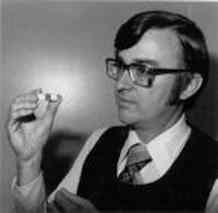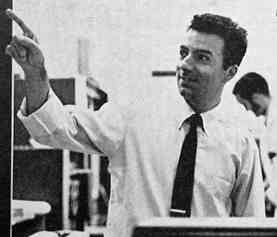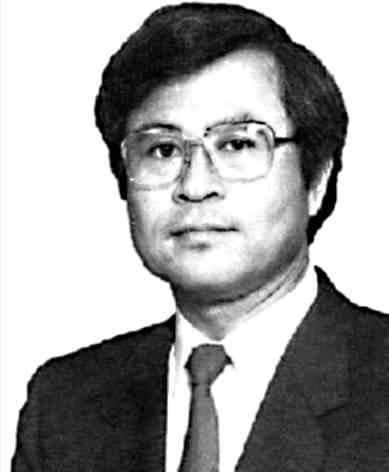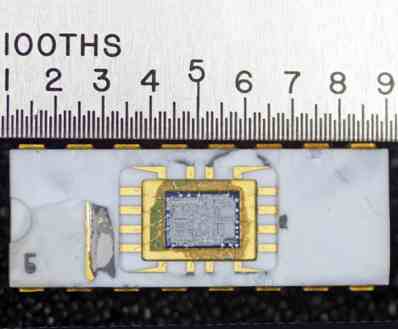| Intel - The Microprocessor Revolution |
Page 2 of 3
Silicon RushThis was the start of the boom years for Silicon Valley. At the time Intel started there were an average of three new semiconductor startups per annum. In 1968 there were 13 and in 1969 a further eight but not all of the action was concentrated in California. In 1969 a group of Texas Instruments employees left and formed Mostek Corp in Dallas. The phenomenon of explosive growth was more to do with technology than geography. Intel aimed to produce a high capacity, high speed memory for low cost. At the time there were some examples of solid state memory in use - small, high speed, high priced memory acted as a cache for some mainframes and slow, high capacity, high priced memory acted as buffers in peripheral equipment. What was needed was a reliable method of making Large Scale Integrated (LSI) circuits. Their target was only to cram 4,000 transistors onto a single chip but it was a difficult task. The key was to replace the metal layer by a polysilicon layer. It took three years to master the process and even then they only got a 10% yield - that is 90% of the devices they made didn’t work. But it was their second product that really made Intel a success. The 1103 was a 1Kbit DRAM and it rapidly became the industry standard. Intel wasn’t the first to produce a 1Kbit chip but the alternatives were slower and more difficult to use. By 1972 Intel’s sales were $23.4 million and they were over the first hurdle. It wasn’t all plain sailing, however. Two months after the introduction of the 1103 a problem with electrostatic charge build-up inside the case caused the memory to be erased. Recognising the entire company’s future was at stake the work to put the problem right went on at a desperate speed. It took two months to identify the cause and a further six to fix. Andrew Grove, then Vice President recalled: “I literally was having nightmares. I would wake up in the middle of the night , reliving some of the fights that took place during the day.” The 1103 was new and very complex technology yet it became a mass produced item within one year of being designed. The working practices of the semiconductor industry were already beginning to form. An egalitarian revolutionAs well as producing the industry standard memory component, Intel also introduced some of Silicon Valley’s innovative work styles. Intel was open plan and even Noyce and Moore worked in a compartment roughly 12 foot square made from shoulder high partitions. It was often commented that Moore’s secretary had a bigger office space than he did! Noyce, in particular, was regarded as setting the style for Silicon Valley and many companies and company bosses tried to model themselves on him and his methods. Stories about him were commonplace. The best known being the day he queued in line to get a cashier’s cheque for $1 million from his personal bank account to buy a Learjet that afternoon. After his divorce in 1974 and remarriage to Ann Bowers, Intel’s Personnel Director, Noyce applied to join the snobbish Los Altos Country Club, only to be rejected because it did not approve of his new wife. His reaction was “To hell with them” and he proceeded to build all the facilities that the club offered on his own property within sight of the Los Altos clubhouse. Simplifying the chipAfter the 1103, Intel lost some of the ground to other semiconductor companies and, as we now know, the entire high volume memory industry would eventually be lost to the Far East. This might have been the end of the growth of Intel, and perhaps even Silicon Valley, if it wasn’t for the next big thing that happened - the 4004, the first ever user programmable microprocessor. This achievement was due to the combined efforts of three men, Ted Hoff, Masatoshi Shima and Federico Faggin. Ted Hoff joined Intel in 1968 as employee Number 12. In 1969 he was assigned to a project to build chips for a calculator design produced by the Japanese firm Busicom. He was horrified by the complexity of the design - the proposed product had half a dozen chips with 3000-5000 transistors each and 36- to 40-pin packages.
Marcian Edward "Ted" Hoff Hoff had been working with a Digital PDP-8 and was struck by the contrast between the two designs. The PDP-8 was simple and regular and yet it could do the same sums that the calculator was designed to do. He decided that he could reduce the random logic needed to implement the arithmetic by adding memory and making the device programmable. The design team settled on a 4-bit processor because this was ideal for working with BCD (Binary Coded Decimal) numbers. In BCD each digit in a decimal number is coded as four bits, i.e. 0000 to 1001, and arithmetic is carried digit by digit. It’s not as efficient as full binary but simplifies input/output because you don’t have to build a decimal to binary converter in hardware.
The original microprocessor - the 4004 from Intel The Japanese company finally opted for Intel’s design for their calculator - four chips, the 4004 CPU, the 4001 control memory, 4002 Data storage unit and the 4003 bus expander. Although the name of the chip set was the MCS-4, in the history of computing it is more commonly known as the 4004. This 4-bit processor was difficult to build and little progress was made until Federico Faggin joined Intel in 1970. Faggin's initial encounter with Masatoshi Shima, the engineer from Busicom who had arrived from Japan to check the designs of the 4004 which was already supposed to be in layout got off to a shaky start, as Faggin later recalled: Masatoshi Shima: ―You bad! You bad! However, things turned out well and, working with Shima, Faggin got the chip set working in just nine months. The pair later went on to found Zilog with Shima responsible for the design of the Z80 and the Z8000 processors.
Federico Faggin (born December 1, 1941 in Vicenza, Italy)
Masatoshi Shima (born August 22, 1943 in Shizuoka, Japan)
Faggin used silicon gate MOS to squeeze Intel's i4004 MPU into a 16-pin DIP cavity
<ASIN:0471499498> <ASIN:0195338219> <ASIN:0471201901> <ASIN:1157619444> |
||||
| Last Updated ( Saturday, 25 March 2023 ) |




